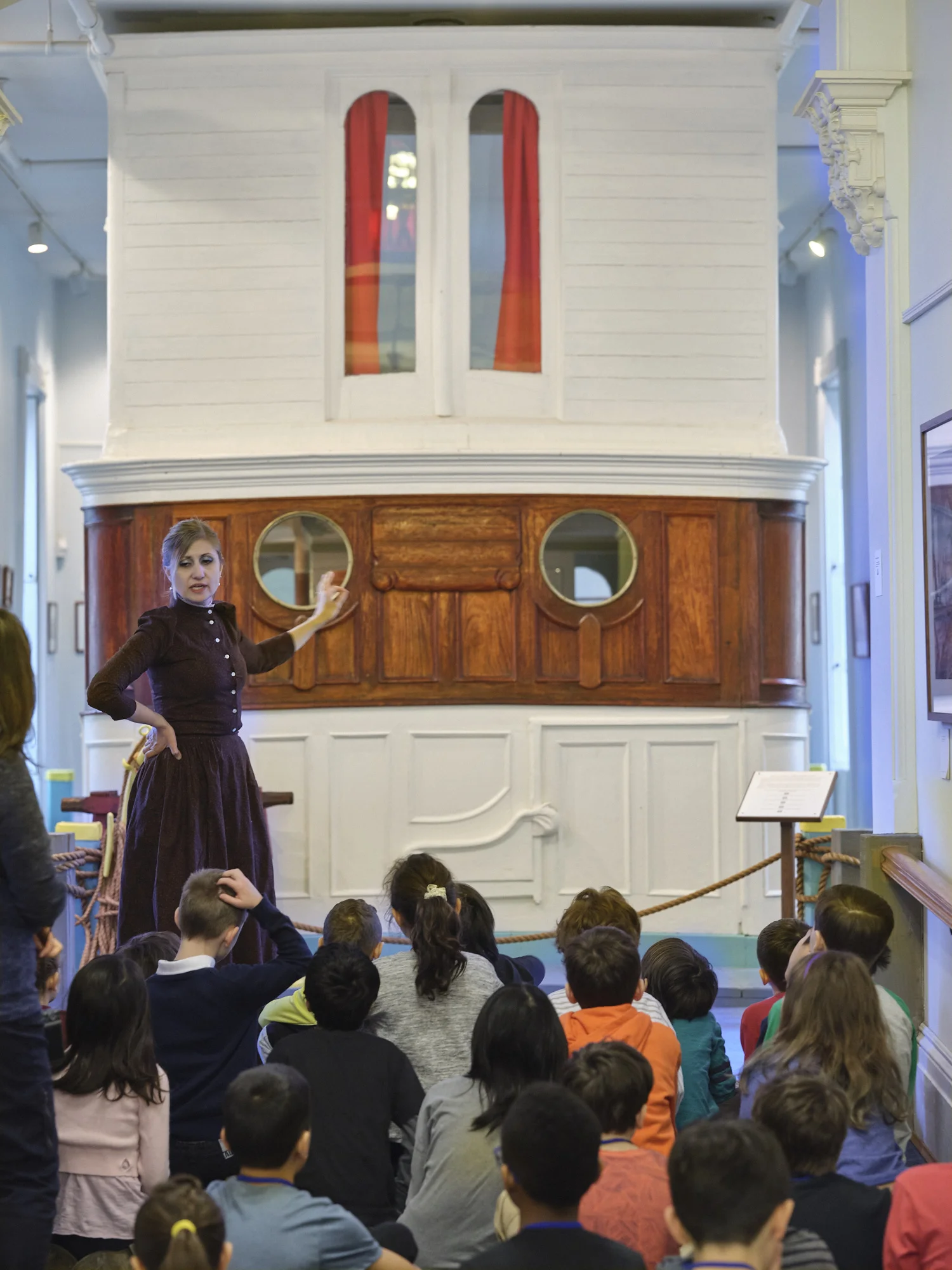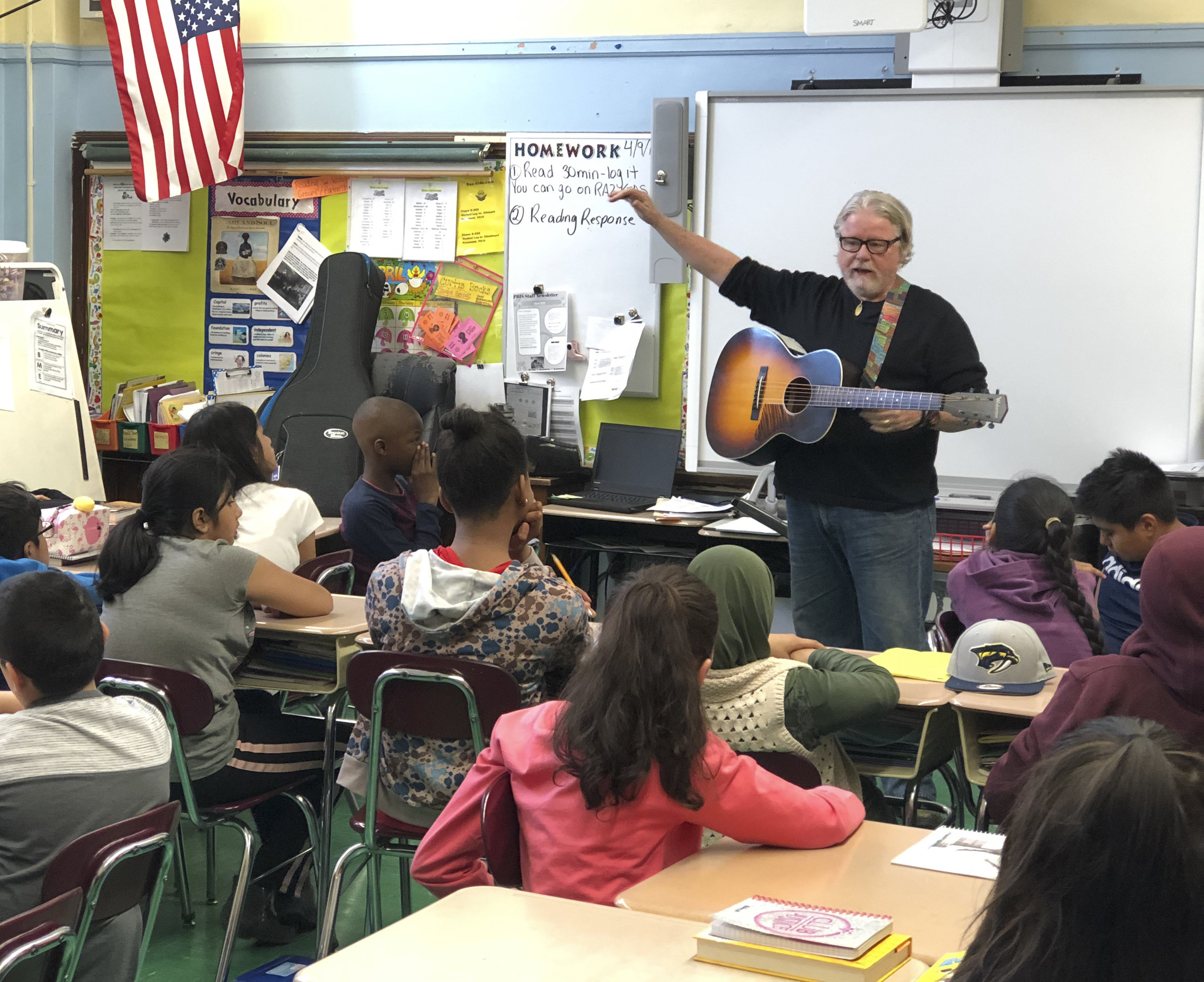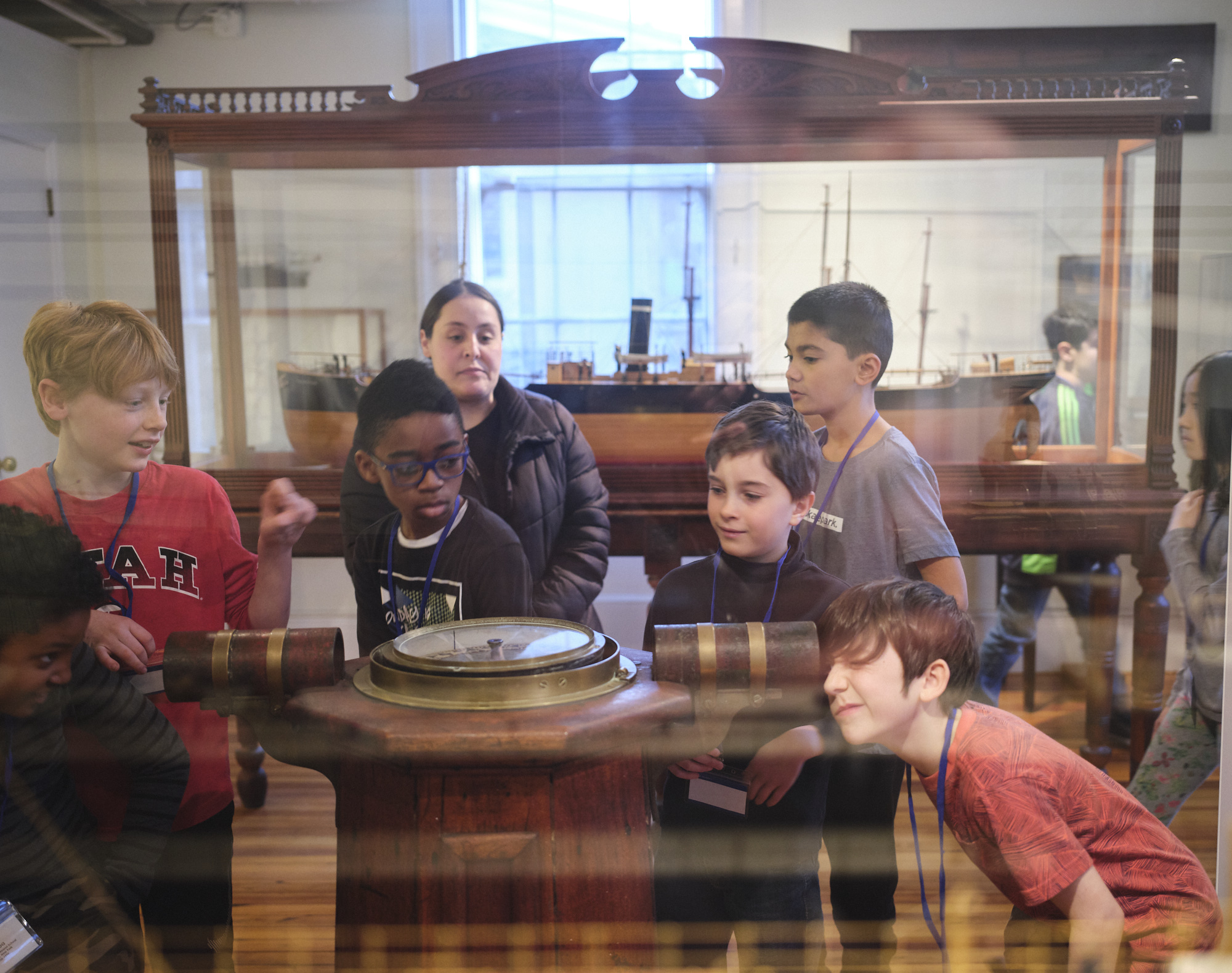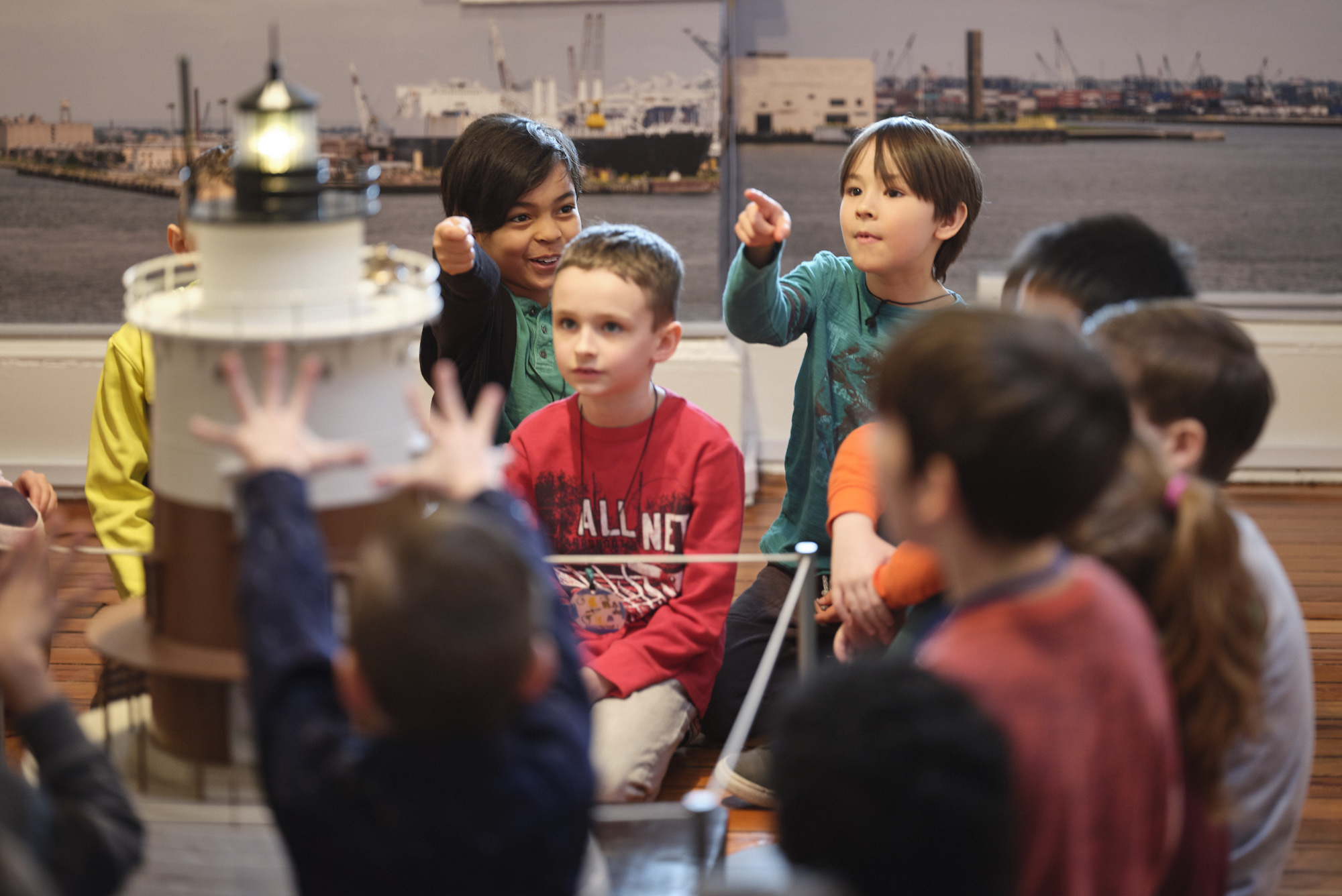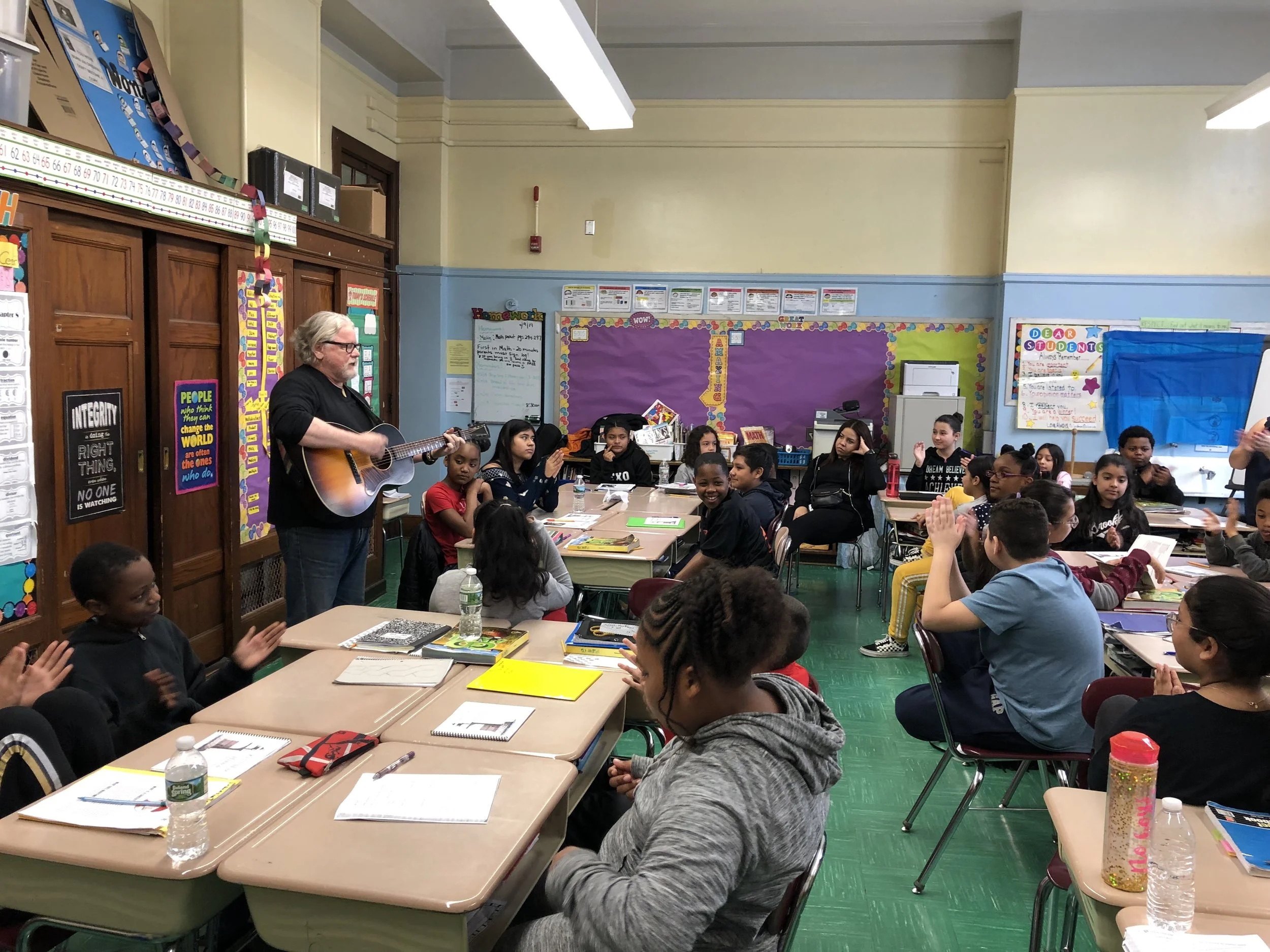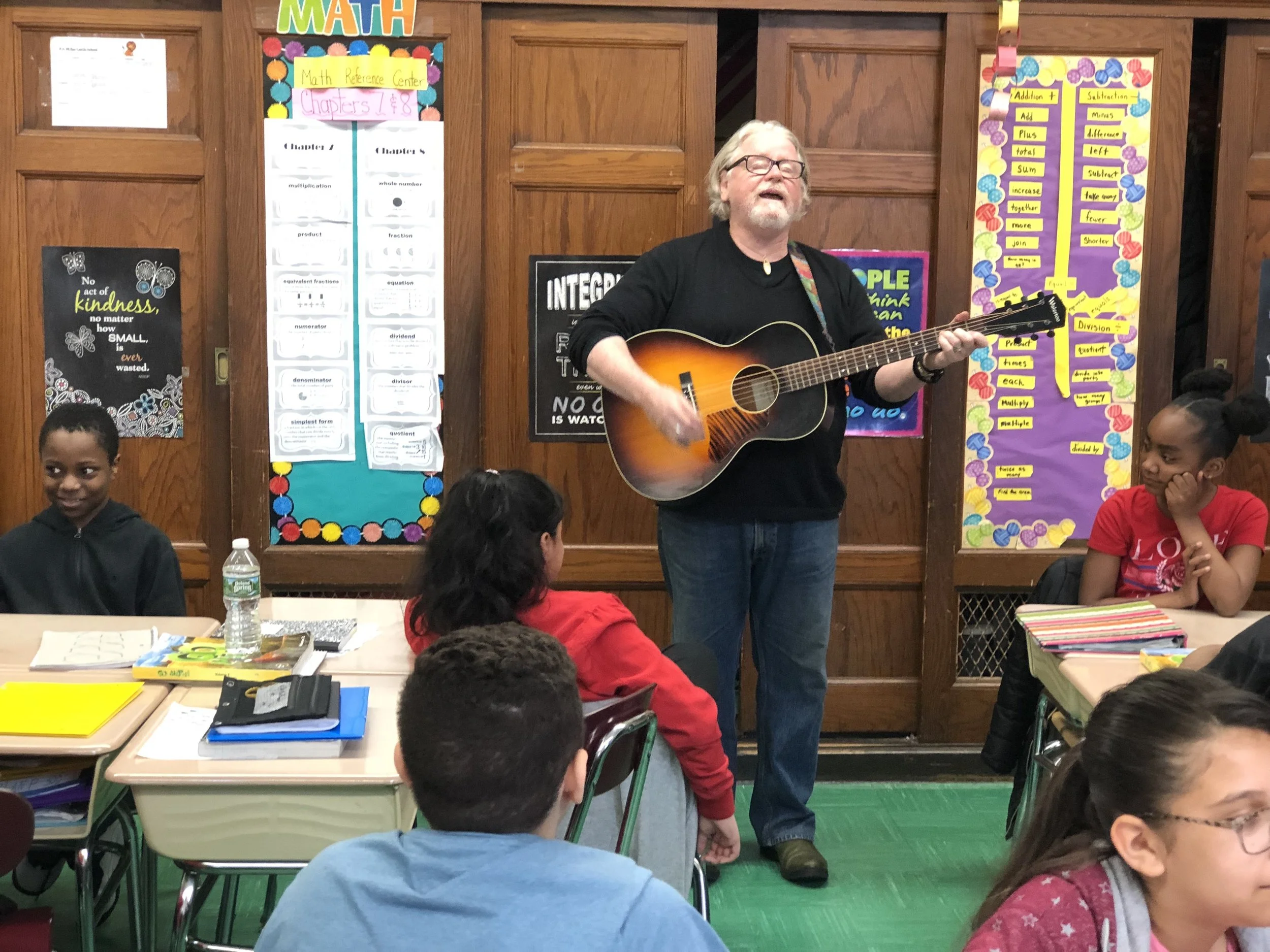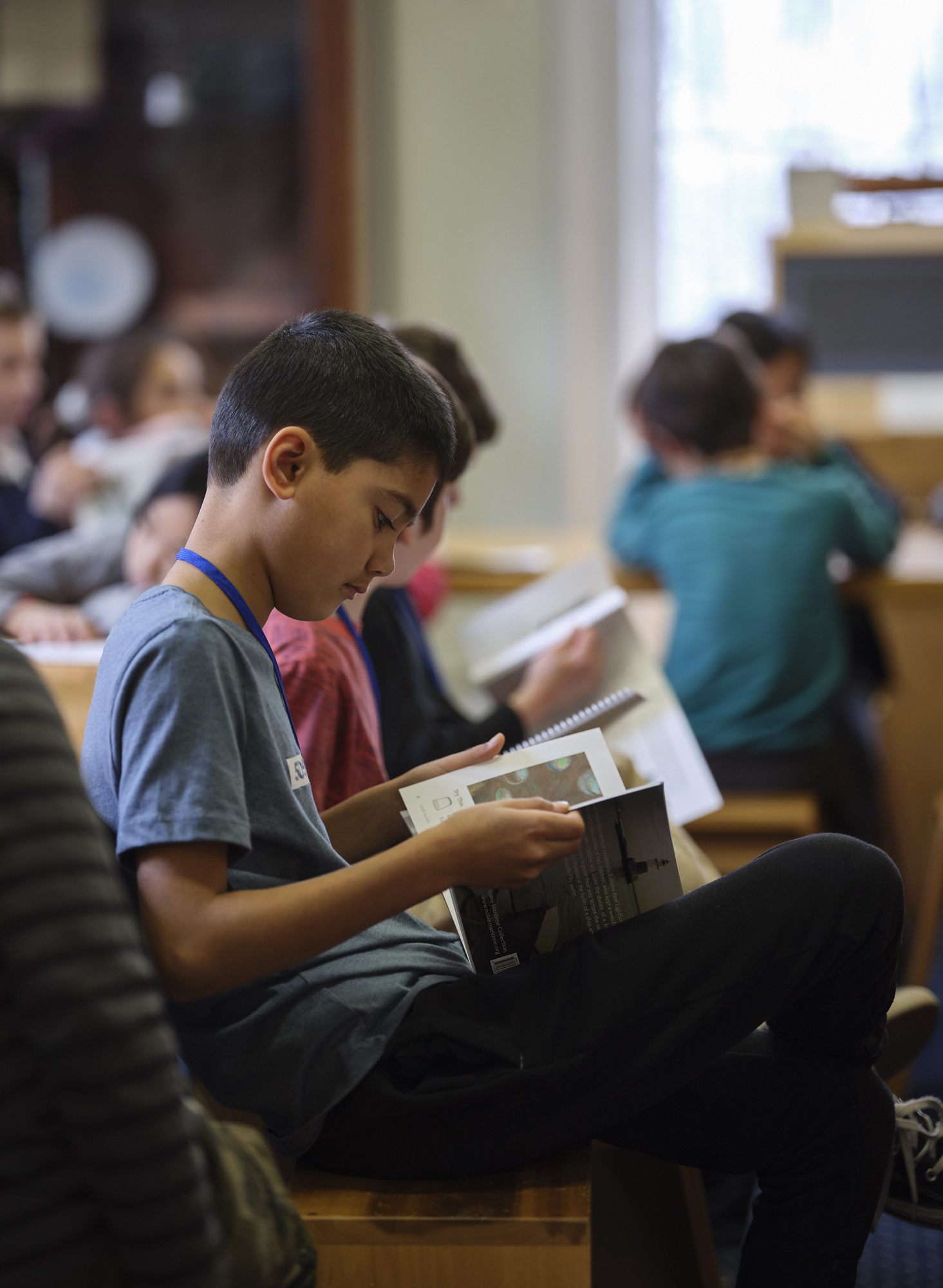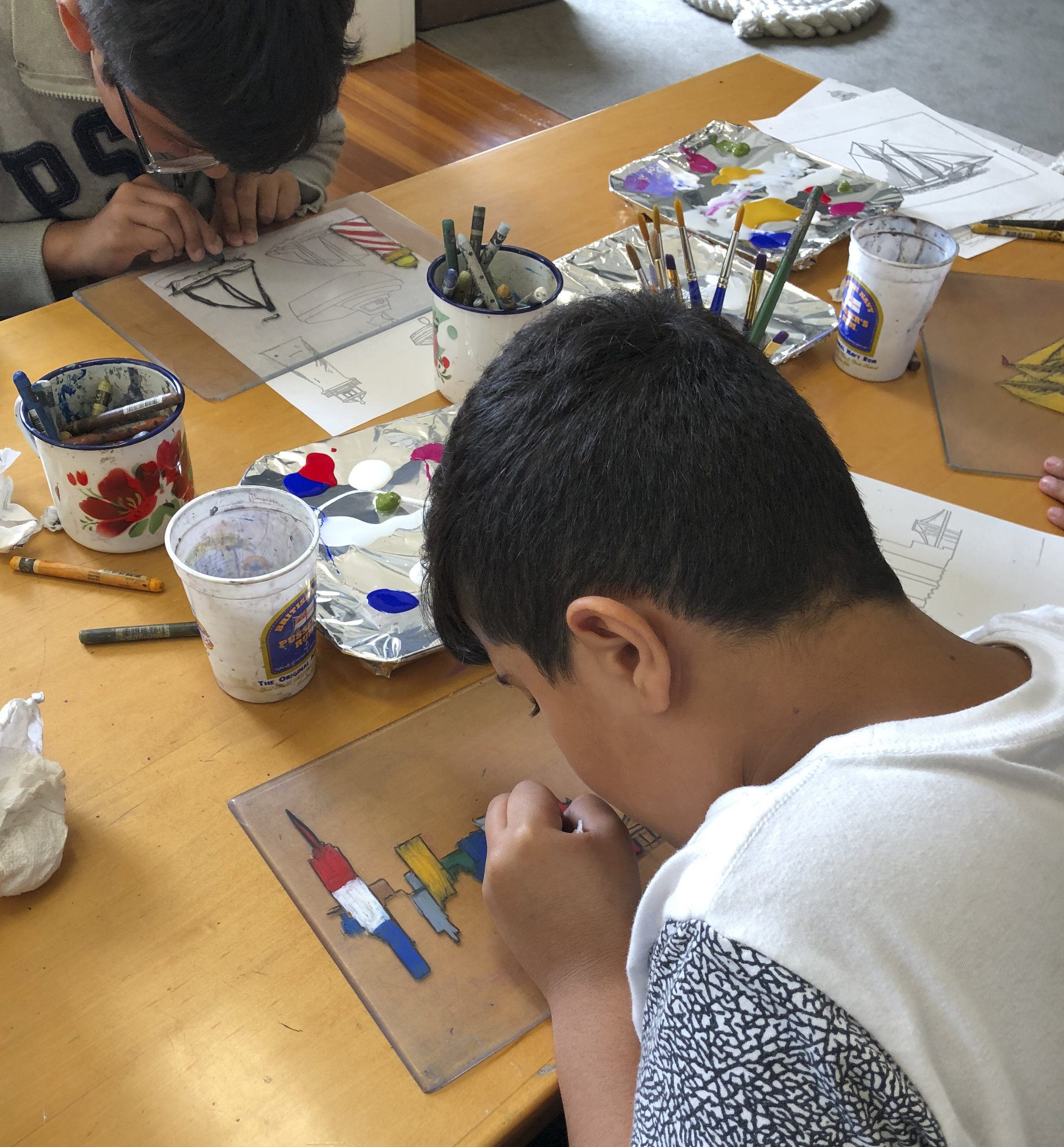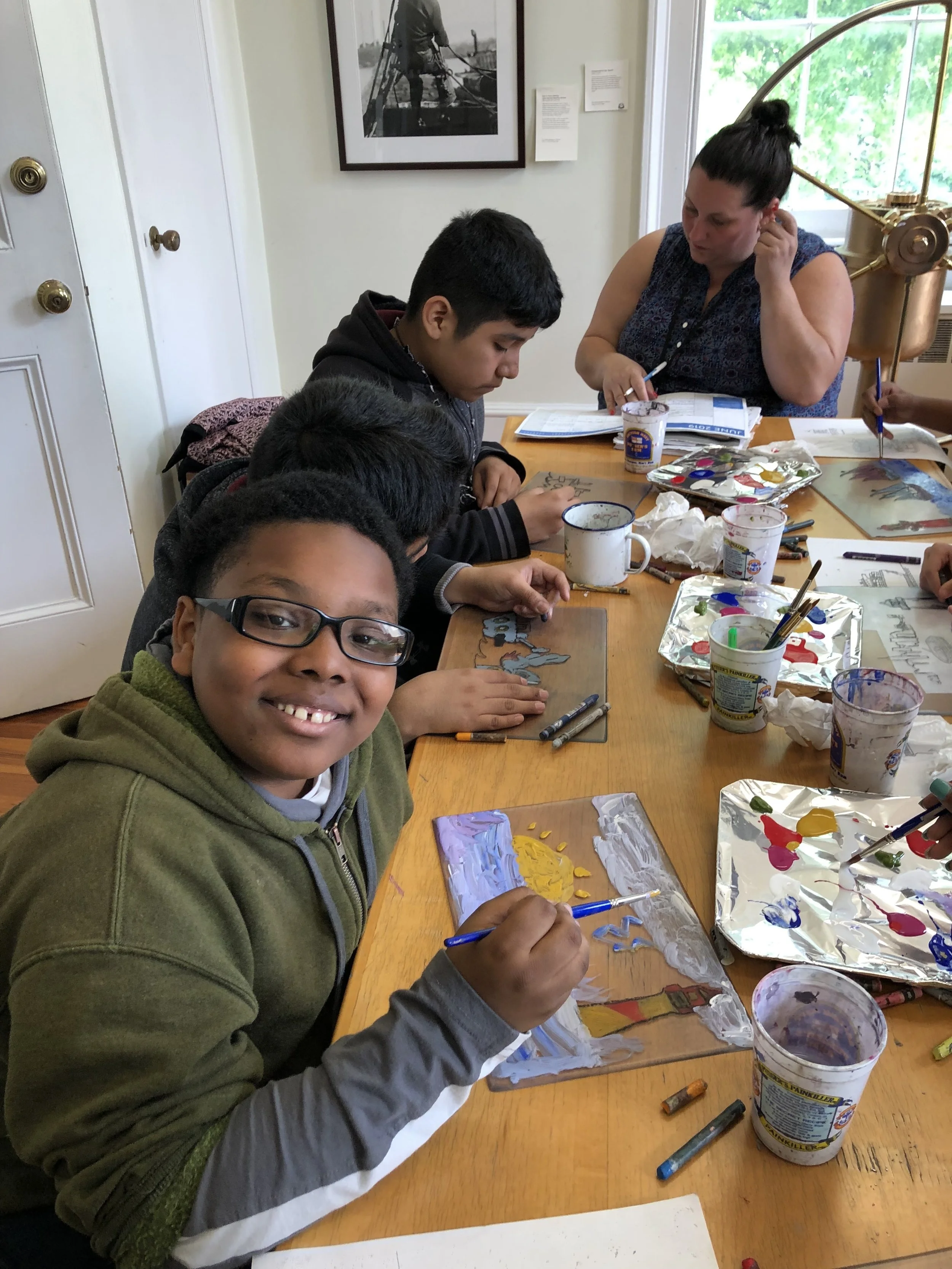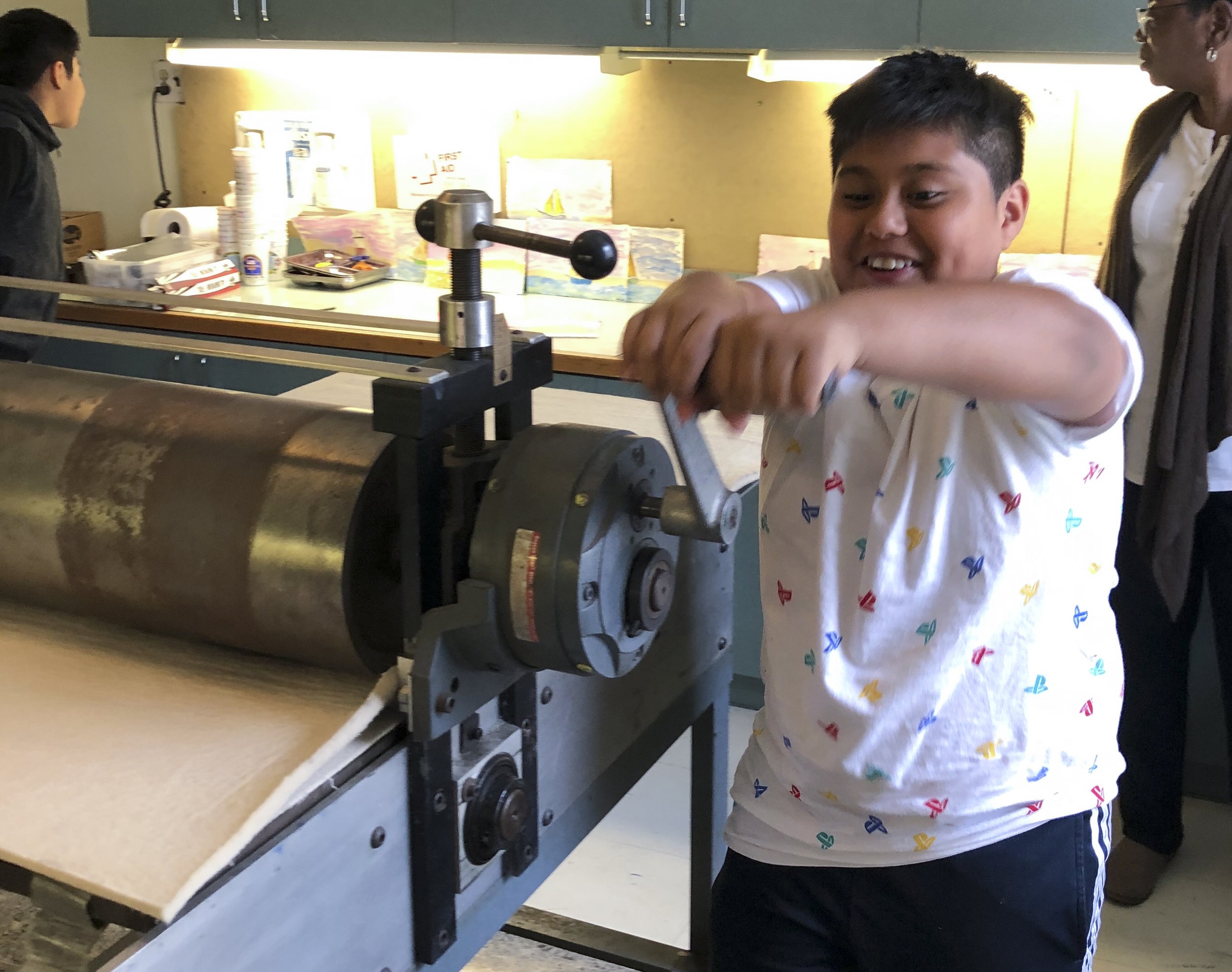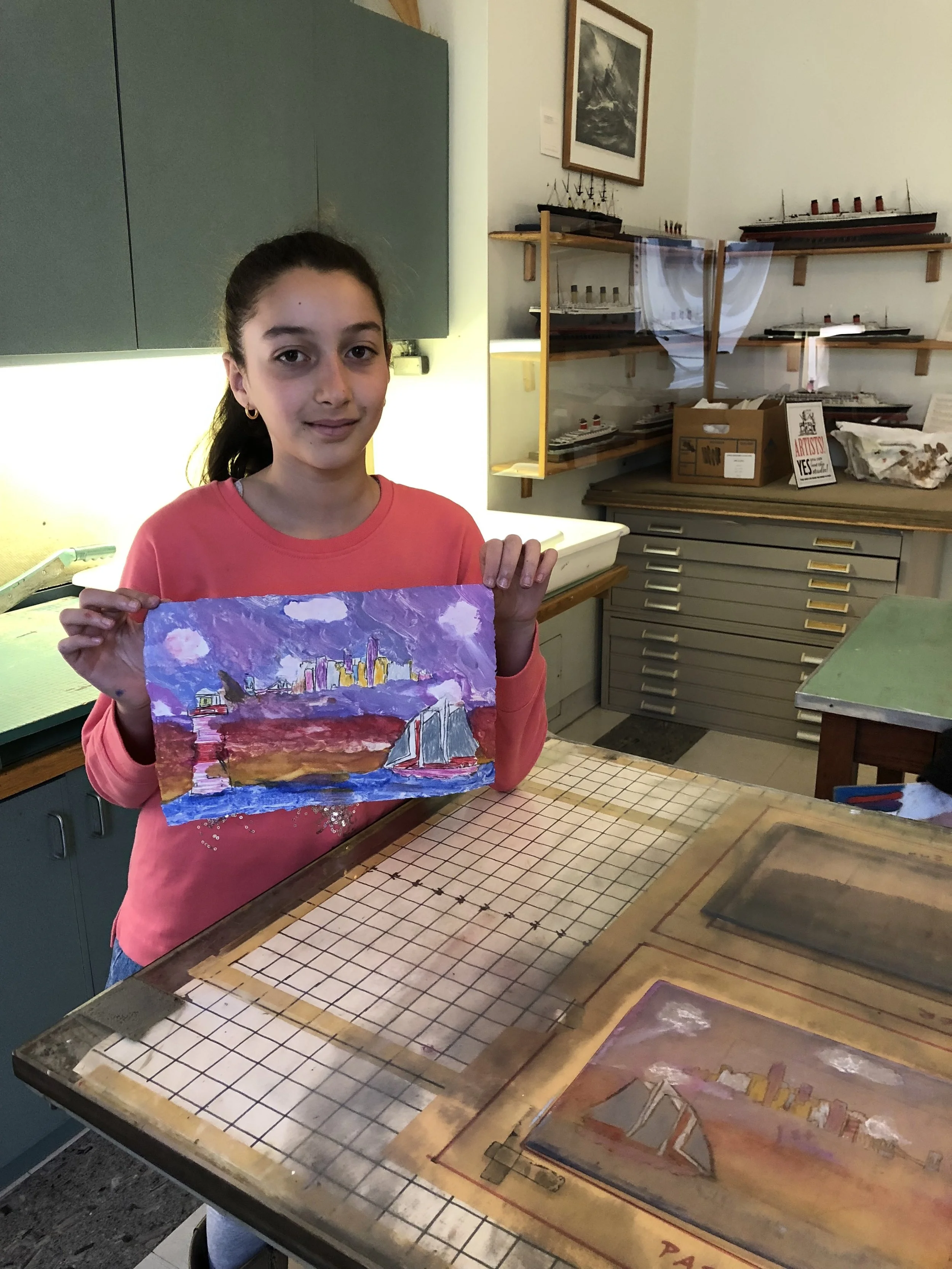Northfield Bank Foundation Supports History & Art Education
Throughout the spring of 2019 the museum partnered with PS 19, PS 20, and PS 31 with the goal of introducing fourth and fifth grade students to a page in local history. We are grateful to Northfield Bank Foundation for giving us the opportunity to meet the students in their classrooms, and bring the story of Robbins Reef Lighthouse and its famous keeper Kate Walker to life.
Museum Program Director Dawn Daniels commenced the program in each of the three schools by telling students the history of Robbins Reef Lighthouse and its famous keeper Kate Walker. She dressed in a 19th century dress and apron, depicting what Kate wore in her daily tasks. The history became real to the students, and they displayed interest in Kate's responsibilities and way of life. A single mother, raising two children in small living quarters is a story that many children in the program related to, and they actively participated by asking questions and following along in the workbooks we provided for them. We showed the classes examples of good and bad writing and discussed the elements of what makes a story interesting to a reader. The workbook includes a maritime vocabulary page, and each student was assigned to include at least five words from the page into their own stories. Words like starboard, kerosene, day mark, lens, and throttle make the stories of the third through fifth graders more engaging to read. We expanded the participants' knowledge of Robbins Reef Lighthouse by introducing a musical element into the program. Musician and songwriter Bob Wright visited the students in their classrooms and performed for them the song that he wrote about Kate Walker and how she kept a watchful eye on New York Harbor, rescuing over 50 people from the water in her small boat called a dory. Mr. Wright taught the song to the children using lyric sheets and his guitar. They joined their voices in chorus, an experience that many of the students never participated in before.
During the museum tour, students broadened their knowledge of Sailors' Snug Harbor, the working waterfront, and maritime painter and printmaker John A. Noble (1913-1983). All participants had the opportunity to tour his houseboat studio within the museum, made from the remains of a 19th century yacht. The finale of the tour is our exhibition, "Robbins Reef Lighthouse: A Home in the Harbor," where students explore amidst Kate Walker's photographs and belongings, in addition to a scale model of the lighthouse, surrounded by a panoramic mural of New York Harbor. Students received a lesson in navigation, and counted the seconds in between flashes of the lighthouse beacon.
The final element of the program was printmaking in the museum's studio. The students visited the museum to create prints inspired by what they learned about Robbins Reef, Kate Walker, and New York Harbor. In an art session led by Mrs. Daniels, the students first made sketches of a harbor scene. They were assigned to make a picture, and put themselves inside it. They imagined what they would see, hear, feel, and smell if they were in the scene. They had to decide on what time of day and what season their scene takes place in, and hypothesize about what might happen next. They were encouraged to mix colors and mediums to achieve different effects and moods such as gray pencil shades and black Cray-Pas crayons for a stormy sky, or orange paint washes and purple watercolors for a harbor sunrise. They examined and analyzed the paintings of local artists Robert Padovano and Elle Finn and talked about what they found eye-catching, similar, and different about each one. Using favorite artistic elements, they synthesized a new design. The students sketched and traced rough outline shapes of the lighthouse and harbor skyline on paper, then used Caran d’ache crayons and monotype paint to create their scenes on plexi plates. The final step was to crank the plates through the museum’s intaglio printing press, a process that is always exciting to students. The image transfers from the plate to paper, resulting in a unique work of art. The students expressed themselves through art, music, and the written word, and became ambassadors of local history in their community.
This residency partnership was made possible, in part, by a generous grant from Northfield Bank Foundation.


